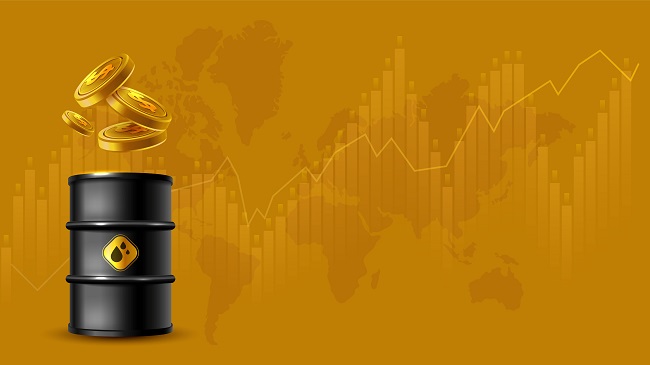Oil is often called the “lifeblood” of the global economy. Even in a time when renewable energy is being adopted rapidly oil still remains the single most important commodity in the world. Oil trading can be made by exchanging physical commodities or speculating on its market price.
What is oil trading?
Oil trading in simpler terms means to trade oil and make a profit. It can be possible by exchanging it with a physical commodity or just by speculating its price on the market. But in the trading market, most oil trading is done in the form of oil CFDs. As oil is a finite natural resource and sensitive to supply and demand factors, the oil trading market is extremely volatile which also makes it a popular place to invest in or to trade.

What are the trading Oils?
The most popular oil in trading is crude oil(unrefined petroleum) as it is the most used fuel around the world. However, there are certain types of benchmarks for oil in trading. These oil benchmarks work as the reference price for the buyers and sellers of crude oil because crude oil comes in a wide range of types and grades. The two most important benchmarks are:
West Texas Intermediary (WTI):
West Texas Intermediary (WTI) is used as the primary benchmark for oil prices. It is sourced from inland texas and because of being the best grade oil, it is easy to refine this oil.
Brent Crude:
It is the most widely used benchmark for oil prices in Africa, Europe, and the Middle East, which account for about two-thirds of global oil production.
Depending on the area of production and refining process, crude oil has its different characteristics. The market value of these crude oils also depends on the consistency with the benchmarks oil. However, the pricing of benchmark oil always fluctuates and the price of other crude oil also depends on this benchmark. If any heavier crude oil is $5 cheaper per barrel than WTI, it will always maintain this $5 difference no matter how much the price of WTI falls.
How do oil markets work?
As you may already know, oil trading mostly works on future speculation of its value. Hundreds of millions of future contracts are traded every day throughout the world, including benchmarks like WTI and Brent as well as lesser-known crude oils. The price of other crude oil will be determined by the price of benchmark oil. The price of the oil is calculated on the basis of different factors such as all the buy and sell prices of traders, refiners, funds, and individuals taking a position on crude. These factors are also influenced by the supply and demand of the oil in the market.

Since 2014, the world supply of oil has decreased every year as global oil reserves have been drained and exploration efforts have failed. The lesser supply of oil means that it’ll become difficult to meet the high demand which would eventually lead to a price hike of oil in the global market.
The worldwide demand for oil is 98 million barrels a day in 2021. The demand for oil is increasing every day and if this extra demand doesn’t meet with the supply, the price of oil is going to rise at a very significant number.
How to trade oil?
Trading oil is just like any other trading activity. Firstly, you need to create a trading account. Then choose whether to trade oil futures, spot prices, or stocks and ETFs. Open your first position in the market, monitor your trading position using technical and fundamental analysis. The majority of oil markets are open for business approximately 24 hours a day. However, because of the trading interruptions, it’s very important to know when each oil market opens and closes in order to know when you’ll be able to create and update trades.
For the traders, Oil is an exciting market to trade on. Its different characteristics and features make it more popular in the trading market. Being a finite natural resource it certainly has less risk than other trading options.

